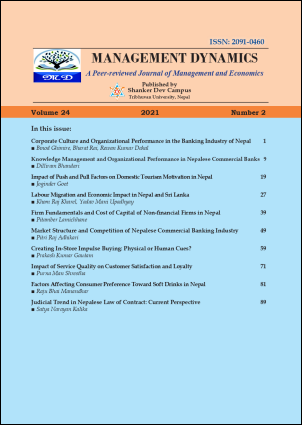Creating In-Store Impulse Buying: Physical or Human Cues?
DOI:
https://doi.org/10.3126/md.v24i2.50040Keywords:
human cues, impulse buying behavior, in-store attributes, physical cues, S-O-R theoryAbstract
Impulse buying behavior is the ever-concerning interest not only in marketing but in sustainable business management; the scope of in-store impulse buying behavior has increased with increasing online purchasing tendencies of customers. This study examines the role of physical and human cues in stimulating the impulse buying behavior of customers purchasing in-store. This study employed a self-administered questionnaire to collect the data from conveniently available customers at their shopping points at well-known outlets in Kathmandu. Following the explanatory research design, the study has examined the direct and mediating effects of predicting the impulse buying behavior of 270 customers with different socio-demographics. Results revealed a significant positive impact of six dimensions of physical cues and interaction with the staff as human cues in predicting impulse buying behavior. Additionally, the mediating impact of human cues ensured that human cues are more important in creating impulse buying. This study has set its originality by developing a mediating model that provides the managerial and theoretical implications of the S-O-R theory.
Downloads
Downloads
Published
How to Cite
Issue
Section
License
Copyright © Research Management Cell, Shanker Dev Campus




